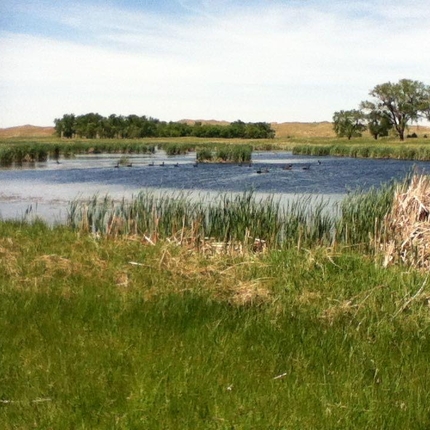By Becky Keim, former staff member
Over the past decade, high commodities prices have encouraged and accelerated the conversion of our native grasslands to cultivated cropland. According to the USDA Farm Service Agency (FSA), between 2011 and 2012, nearly 400,000 acres of grassland and other non-cropland across the United States were plowed up or otherwise converted to cropland.
Alarmingly, land conversion rates like these haven’t been seen since before the Dust Bowl of the 1930s. As a Nebraskan, what’s even more concerning is that the USDA’s data reveals that of all states, Nebraska topped the list with more than 85 square miles of land being converted from native prairie to farmland in a single year.
While the financial incentives for landowners to convert grasslands to cropland are high, programs also exist to provide financial incentives for landowners to “keep the grass grass-side up” by managing their grasslands with a conservation lens.
Through the Environmental Quality Incentives Program (EQIP) and the Conservation Stewardship Program (CSP), both funded by the United States Department of Agriculture Natural Resource Conservation Service (USDA NRCS), landowner participants receive funding to take additional steps to improve the condition of their grasslands, including the quality of the soil, water, air, habitat, and energy.
Examples of some CSP practices commonly used by Sandhills ranchers include installation of cross-fencing; windbreaks; installation of water pipelines, pumps, and storage tanks to improve grazing distribution; and prescribed grazing. EQIP conservation practices commonly used in the Sandhills include monitoring key grazing areas, deferment of areas for wildlife, pollinator habitat areas, livestock nutrition monitoring, and wildlife escapes/turtle ramps.
In fact, Sandhills’ landowners have a variety of conservation funding sources available to them. In addition to EQIP and CSP, numerous other conservation funding sources exist, including nonprofit organizations like the Sandhills Task Force, among others.
Using these sources, many Sandhills’ ranchers manage a “conservation portfolio,” implementing various conservation practices while working with several different conservation funding organizations (such as the Sandhills Task Force, Natural Resources District, and the Natural Resources Conservation Service, as well as others). Working with these organizations, Sandhills’ ranchers are able to develop solutions to address priority resource concerns on their ranches and simultaneously deliver environmental and economic benefits.
The Center for Rural Affairs recently visited with several Sandhills’ ranchers engaged in conservation practices designed to maintain Nebraska’s grassland regions for their economic and ecological value. Detailed profiles of these Sandhills’ ranchers describing the various conservation programs mentioned above, as well as the ranchers’ motivations for conservation, how they implemented the conservation practice, and the results of the conservation project will be published in the coming weeks on the Center’s website, social media, and in local news. Stay tuned.



